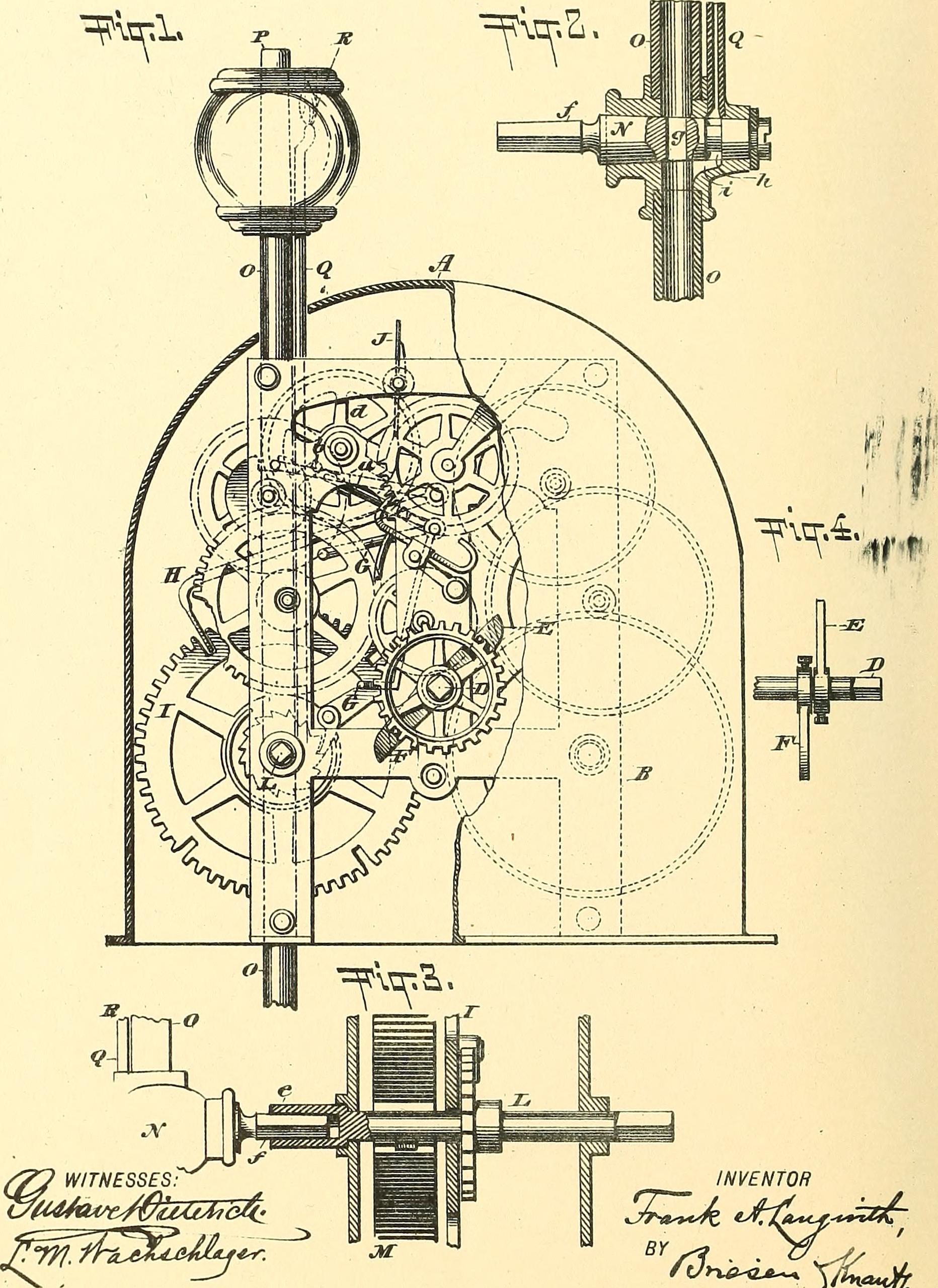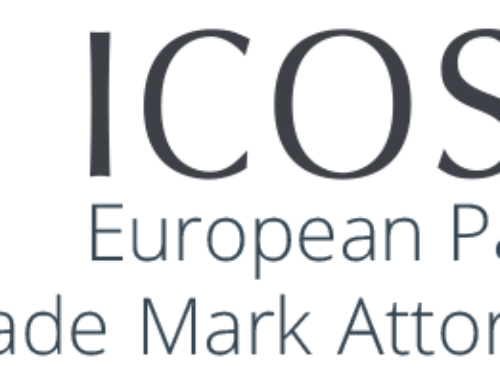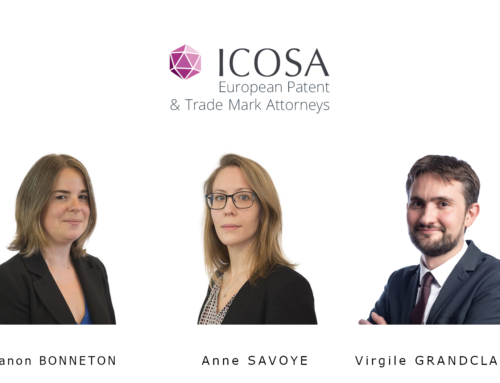Increase your value through Intellectual Property
Here we go again, September a back-to-school season, and an opportunity, if this year not more than usual, to put everything in order and think strategically.
Have you created a company? developed a new product or a new service?
Have you thought about protecting your intangible assets, all your intangible assets?
We suggest you take a moment to make an inventory of the intellectual property rights you hold (perhaps without knowing it) or to which you might be entitled.
About the author
By Laurence Rivière, Head of the Trademarks and Contracts Department of ICOSA – Intellectual Property Attorney
Laurence Rivière assists French and international companies of all sizes in their strategy of constitution, valuation, upgrading and defense of intellectual property rights. Laurence is also specialized in issues related to domain names and cybercrime (counterfeiting on the web and e-reputation).
To assist you and optimize your asset protection and valuation strategy, please contact Laurence Rivière: lri@icosa.fr

Laurence Rivière,
Head of the Trademarks and Contracts Department
Perhaps you already have an active company and have developed new products or concepts?
Or maybe the last few months have been a revelation for you and you are finally taking the plunge to develop a new activity?
Perhaps you have developed a new product in connection with Covid and the new lifestyle habits that we all have to adopt from now on (dispensers for hydroalcoholic gels and masks, sterilizers, disinfectants, masks, tools to limit contact with different surfaces etc)?
In any case, the central question of protection under intellectual property rights returns. For I can never say it enough:
No business without intellectual property rights!
Beyond stocks, premises, equipment, a company holds intangible assets that contribute, sometimes (often) very largely, to its value. It will be a particular know-how, a technique, an innovation, but also a name, visual elements that individualize your products or services compared to those offered by competitors.
The legal protection of your intangible assets should not be seen as a constraint, but as a reflex to have as you build your project. And you will see, it is a reflex that can be quite natural.
To help you, here are the 6 main (but not unique) intellectual property rights that you own or that you may well be able to claim rights to.
1- The company name, trade name, sign
For obvious reasons, particularly related to taxation, you will carry out your activity in the form of a company or an association, rather than in your own personal name.
This company will have a name that includes one or even three intellectual property rights:
- Company name (the name that will appear on your certificate of incorporation),
- Trade name, which may be different, and which you will affix on all documents intended for third parties (investors, customers, suppliers, distributors, etc.),
- Sign, provided you own a physical store.
By simply registering your company, you can challenge, under certain conditions, the use or application by a third party, for any reason whatsoever, of a sign close or identical to your name, for a close or identical activity.
On the other hand, when choosing this name, you must be careful not to infringe the rights of a third party. Please note that your company will be registered without controlling the rights of third parties.
It is therefore up to you to carry out prior rights searches in order to avoid actions for infringement and/or unfair competition.
2- The trademark
A trademark is a name and/or logo affixed to a product or associated with a service.
Whether you act in B2B or B2C, you must think about one (or more) brand(s) to communicate on your business, in order to attract investors, customers, members.
It must be a distinctive and non-descriptive sign, and of course an available sign.
This sounds like boring legal language, but from a marketing point of view, these conditions make sense to differentiate you from your competitors. The goal is to ensure that interested people can find you easily, and don’t knock on another company’s door, thinking it’s you hey will find.
If the conditions are met, trademark registration grants you a right to a monopoly on the protected sign. Conversely, such protection also allows you to avoid finding yourself in a situation of counterfeiter.
Moreover, and this is not insignificant, each trademark has a value. When it is properly protected and genuinely used in accordance with the rules of intellectual property law, the trademark can be licensed or assigned for sometimes very large sums, and thus generate an additional source of income.
It is therefore advisable to register the sign in the form and for the wording adapted, and on all your territories of interest.

3- The domain name
Nowadays, there can be no activity without web presence, therefore no activity without a domain name!
You must own one or more domain names (and operate them of course) in the extensions of your interest.
To register a domain name, nothing could be easier at first sight: registration is automatically and systematically granted to the first one who requests it according to the “first come, first served” rule. The prices are also very accessible.
However, here again, be careful not to infringe the rights of a third party.
The domain name is not an industrial property title, but it has been recognized by the European Court of Human Rights as an intangible asset (ECHR, September 18, 2007 – 25379/04) and as an item valued on the balance sheet (French tax instruction of May 9, 2003, BOI 4 C-03).
It may also constitute an opposable prior right and in particular serve as a basis for opposition to the registration of an EU trademark and, since April 2020, a French trademark.
So do not underestimate its power!
4- Designs
If you manufacture and market a product, it is possible that it may have aesthetic features that qualify for design protection.
Designs are valid for up to 25 years, renewable in 5-year increments.
Like trademarks, designs are registered in a public register, which has a certain deterrent effect on third parties.
It is sometimes used for store fixtures and fittings

(EU design no. 002993204-0003 of Kiko S.p.A.)
or product packaging:

(EU design n°003061225-0001)
5- The patent

If you have developed an innovative product or solution that provides a technical solution to a technical problem that has never been solved, you may be eligible for patent protection.
This valuable asset is a guarantee of seriousness for both your investors and your customers and should not be overlooked.
In the field of healthcare, Icosa has the leading team in the fields of pharmaceuticals, medical devices, Artificial Intelligence, food and cosmetics.
Icosa notably has an Artificial Intelligence cluster.
6- Software
If your business is or relies on the creation of software, it may be subject to automatic copyright protection.
Nothing to do here, the protection is born with the creation of the software itself. However, in order to be able to assert this right, it is still necessary to be able to prove that the software existed prior to the allegedly infringing software.
We therefore recommend a protection through copyright on the territories where it is possible and/or register your digital creation in the international IDNN register in order to benefit from a certain date and to be able to retrace the evolution of the software.






